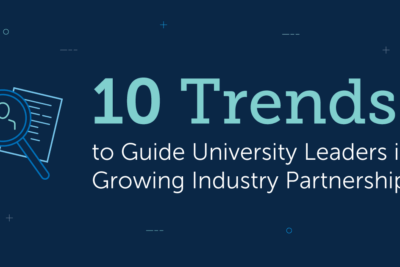You’re a researcher looking for flow cytometry services on campus—where do you begin? The research office website? Google? Your colleague down the hall? More often than not, researchers will ask a colleague for help. In a recent survey of faculty and lab staff, 95% of respondents said they’d ask a colleague for recommendations when looking for new equipment to use on campus. But this approach may not lead faculty to the best information, overlooking helpful resources that exist for this purpose.
On average, just over 50% of a core facility’s income comes from user fees. This leaves core directors and institutions to fill in the funding gaps required to maintain the core’s operations. Institutions who want to boost their core’s financial sustainability should focus on connecting potential users with the on-campus resources already available to them.
Increasing the visibility of core facilities will assist researchers find equipment they need and boost core facilities income. More customers generate more user fees, which can decrease reliance on internal subsidies. Read on for three steps to increase the visibility of your core facilities to potential users on and off campus.
This resource is part of the Establish a Centralized Core Facilities Program Roadmap. Access the Roadmap for stepwise guidance with additional tools and research.
50%
Make the information easy to find on your research office website
A recent survey asked respondents how they would find information about equipment that they don’t currently use: 57% said they would refer to an institutional list and 52% said they would conduct an online search. As a result, it’s critical that information about core facilities is easy to find from the homepage of the research website.
Some institutions, like University of Oklahoma, choose to have their own section that links directly to core facilities. Others, like Tufts University, opt to put core facilities in a relevant section like “Resources” or “Tools for Researchers.” Regardless of where your institution locates this information, it should be accessible within a few clicks. The core facilities section should include basic information for each core, including its location, point of contact, pricing, and a link to a core-specific webpage (if available).
An easy way to help both internal and external users search for equipment is through a searchable database or listing of cores. Northwestern University’s core facilities pages provides access to both a listing of cores and a searchable database that utilize filters for location and category. Case Western Reserve University includes a list of cores that can be refined by various criteria. Clicking on a core takes the user to a page with additional information on that facility.
Create opportunities to teach potential customers about cores (and when in doubt, provide food!)
Online resources can be great for someone who has specific equipment in mind. But there’s likely a large group of potential users (new faculty, post docs, graduate students) who don’t know what equipment and resources are available to them.
Quickly assess the visibility of your core facilities
Many research offices host core facilities “fairs” to increase awareness of the many facilities available on campus. These events provide opportunities for researchers to quickly learn about multiple cores by providing each facility with a booth where they can present an informational poster and answer questions.
Many institutions seek to make these events more fun, often offering food or a raffle in hopes of drawing a larger crowd. University of Chicago’s Core fair promises both information on cores and Chicago-style hot dogs, while University of California San Francisco provides pizza and holds a raffle to win Amazon gift cards at their core fairs. University of Arizona’s First Annual University Core Facilities Fair included posters from 22 core facilities and invited attendees to participate in a networking mixer following the event.
While fairs bring the cores together in one place, other institutions have opted for events that bring people directly to the facilities. Open houses, like Northwestern University’s Chemistry of Life Processes Institute (CLP) annual Core Crawl, invite potential users to tour facilities and meet directly with the experts.
Consider new marketing strategies to grow the user base
The majority of institutions have some type of core facility listing, either online or in print, that provides information but doesn’t do much to engage readers. To grow the customer base and revenue, research office staff and facilities directors need to be more proactive.
Some offices have found new ways to use technology to showcase their facilities. Northwestern University has a user-friendly website that features a video with interviews and footage of the facilities. The University of New Hampshire’s University Instrumentation Center (UIC), a university-wide core facility, maintains an active twitter presence. In addition to promoting the research at UNH, the account (@UNH_UIC) highlights new and existing equipment and promotes demos happening at UIC.
On campus, research offices can leverage existing opportunities to reach a larger groups of researchers. Some research offices have begun to request time during new faculty or post-doc orientation to provide an overview of the equipment available on campus. A quick presentation at department meetings or other faculty gatherings is another great opportunity to quickly reach a wider audience.
As institutions continue to make large investments to support their core facilities, they need to better promote these resources to potential users in order to generate additional user fees.


